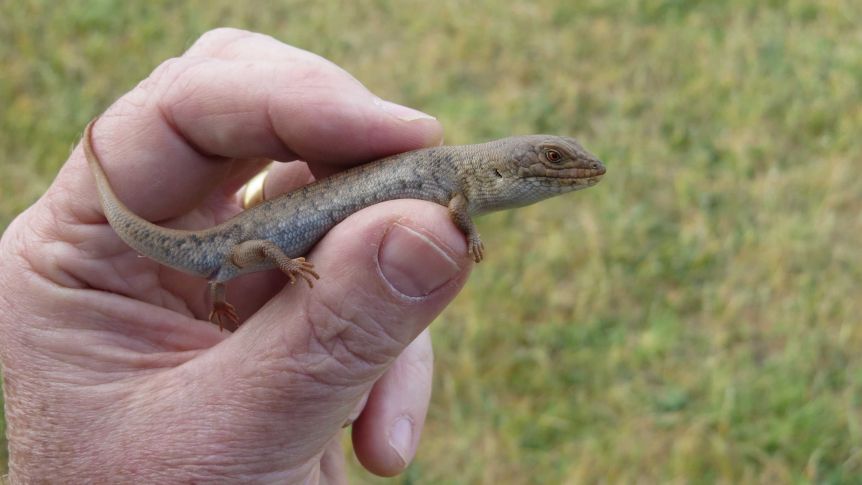
Fifty-two pygmy blue-tongues have been released on a farm in a southern area of the mid-north, 90km north of Adelaide, as part of a $400,000 Flinders University Australian Research Council Linkage project to save them from looming extinction as our climate warms.
Pygmy blue-tongues are unique to South Australia and live in grasslands, predominantly sheep grazing land in the mid-north. Their population is endangered due to habitat limitations and limited dispersal ability with the skinks found from Kapunda up to Jamestown.
"Modelling indicates these lizards are in danger of extinction in around 50 years' time due to climate change," says Flinders University's Associate Professor Mike Gardner, lead researcher on the ARC project.
"So we need to know how to re-establish them further south, where temperatures are predicted to be cooler and will match the conditions they evolved in." Associate Professor Gardner says.
The relocation of the lizards is the culmination of almost thirty years of investigation conducted by Associate Professor Gardner, his team of researchers, and those before him – including the late Professor Mike Bull who established Flinders University's expansive lizard research.
The relocated specimens are from the Kapunda and Burra areas, and Associate Professor Gardner says their new home provides a similar environment and climate to some but also tests how the more northern animals might cope.
The lizards were collected in early spring this year, then held at Flinders University before release into artificial wooden burrows within open-air enclosures installed on the farm.
Associate Professor Gardner says the biggest risk is predators, particularly birds of prey, and cameras have been set up to monitor activity.
"It may also be necessary for us to relocate wolf and trapdoor spiders from their previous home, to provide the burrows the skinks use in their natural habitat.
"If the lizards survive, we'll remove the enclosures and let them live naturally in this environment," Associate Professor Gardner says.
With the lizards surviving only on sheep grazing land, farmer support has been vital.
Together with committing land to the enclosures for the five-year term of the project and enabling the movement of scientists and students through the property, the host family has also assisted on the ground.
"The kids have helped us feed the lizards and helped to find if spiders had moved into the artificial burrows. This is a great experience for them too, it's hands-on science.
"We'll now look to do another release in about March and then we'll be able to understand the best time of year for translocation. If all goes well, we can start moving them from further north.
"We have unique wildlife in SA and it's important to save as many species, and retain as many ecosystems as possible, as the effects of climate change transpire."
Pygmy bluetongues feed on small invertebrates such as spiders, grasshoppers and ants, together with some plant matter. Just 10cm long and spending around 98% of their lives in burrows, they are rarely seen by humans.






